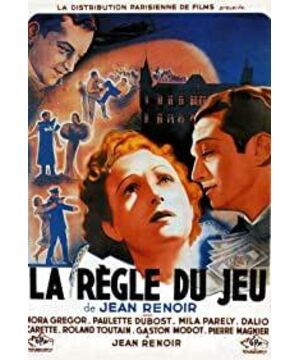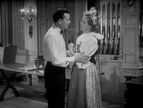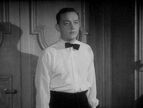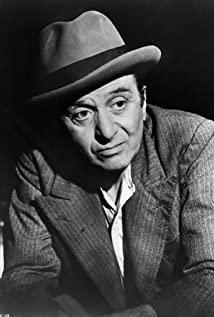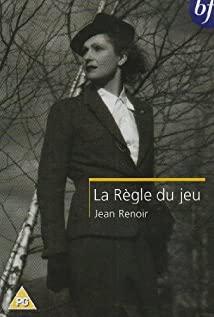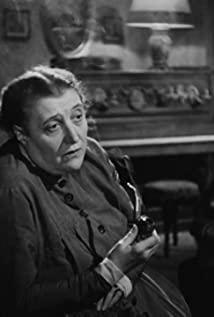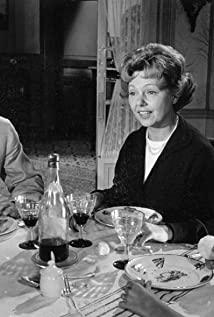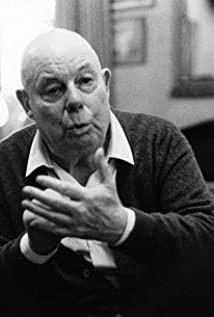In most parts of the film, Renoir is a cool narrator, directing with still shots and panning shots. He admitted that he “wanted the audience to have the impression they were seeing a single shot following the people and that there had not been any cutting ” . When Octave is guided into Christine's bedroom, to the living room with Robert, and to the hall with the server , the scenes are mainly quite long and moving in panoramas. No careful close-ups revealing the spirit status of people. Renoir's camera is just like an observer watching a show from a long distance. Similarly, throughout the last part of the film, the murder, the camera even gets trapped in a corner, where it is forced to watch the action from a fixed position. No intervene to break the long action, no agony when the murder happens.Renoir observed it in a half amused and half anxious way.
However, the hunting scene is an exception. It's the fastest-pace scene in the film with a lot of cuttings. Initially, it requires fast rhythm when shooting the scene of rabbits running and birds flying. Moreover, the scene constantly cuts between different running rabbits and the hunters, in order to make a tense atmosphere for the rabbits and an enjoyable atmosphere for the hunters. Thus the contrast forms.
Also, it uses much more close-ups than the other scenes. The extremely wonderful close-up is a dying rabbit, even struggling to kick its legs like a kind of dancing. It's vivid and cruel to represent it with a totally complete and clear close-up as long as 3 seconds, which puts the misery before death directly in front of us, scares us and arouses our sympathy.
The fast cutting and the close tracking of the rabbits imply the hunting scene is no longer Renoir's calm description from an angle of observer. Actually, we can rarely see any other scenes filled with feelings like this one. Even the murder scene is designed to be as less objective and less striking as possible. But the result turns out to be infectious and impressive, which should owe to the hunting scene, as a metaphor of the murder, attracts more attention than the murder.
The hunt scene tells more about the murder than the murder scene itself. In the hunting, the wealthy masters act as murders, and the servants as accomplices. The servants drive the rabbits and birds to a certain direction for their masters, and the masters enjoy the feast of killing. In terms of the form, this “outdoors” scene has a lot in common with the “inner” world of the mansion.
Just like the rabbits running here and there, Andre, Robert, Christine, Lisette, the gamekeeper Schumacher and the poacher Marceau hide-and-seek in the same way. The hiders want to escape just like the rabbits do, all of them risking their lives with guns pointed to them.
The chateau is holding a big show, at the same time, a chasing show is on display. It's so ridiculous and ironic a scene that wealthy masters and servants in tidy and noble clothes chased each other like hunters and frightened animals. No wonder the spectators who were watching the show regard it totally as part of the acting. Spectators didn't take it seriously, just as a game.
Like the chaos during the hunting, inside the mansion there's a big mess. The relationship among people is complicated, unexpected people joining the chasing game. Some were sad, mad, and some were terrifically delighted, correlated with people's reaction after the hunting.
The mostly important quality in common between the outside hunting and the inside chasing is that, in essence, it's the people who get control of weapon control the game. In face of guns, fastest rabbits can only survive due to luck. The gunman is also bound to shoot somebody, who turns out to be Andre, the most innocent one in the bloody game. Why is Schumer, the gamekeeper designed to shoot Andre dead? Because he is the gamekeeper, who puts the game in order and tells people to follow the rules with his gun. The word “gamekeeper” is a kind of metaphor itself. Faced with the coming World War II the society was like a huge hunting game, where who has the weapons controls the game.
Renoir commented on The Rules of the Game that “it's a film about a group, a film representing a society.” A society that “everything they believed in was collapsing” . “It's not so difficult to work well when the compass of anxiety points in the true direction.” However, this movie was a resounding flop after releasing because of this true direction revealed in the movie.
The Rules of the Game was made just before the war. Renoir said in making it, he had wanted to make a film in which French society was seen as “dancing on a volcano”. And beneath its seemingly innocuous appearance the story attacks the very structure of society.
Renoir preferred to let actors play in the décor and catch them unawares. The camera established a “narrator” whose stance and gestures express an inhuman indifference to the human figures within its world. The suffering and joys of the inhabitants of that world move us, although the camera frames that world as if it were inhabited by puppets, not people. For example, we never know Christine well although she is the main role. What she thinks? What she wants? Most of the characters are too mysterious to dig out .
The only exception is Andre. At the very beginning sequence, Andre came back as a hero, but burst out truth, unable to conceal his emotions. There are master level, servant level and bottom level (as Marceau), but there's no level that Andre belongs to, because he is the only honest person in the movie. Robert is tired of love affairs with his mistress. Christine says I love you to three different men since she knew Robert's betrayal, which are neither true nor totally false. Lisette is the mistress of Octave and she flirts with Marceau. Octave, Andre's honest friend, wants to occupy Christine by his own. It's a world full of lies, and survival of the fittest. Octave comments Andre is floating in the air while Robert is on the ground. At last the most honest person is out of game and Andre's murder is covered with another lie of “incidence”.
The Rules of the Game is a continuous integrity, full of metaphors and poetic rhythms. Among them the hunting scene is worth discovering. It differs from the other scenes with a fast cutting and represents extremely strong emotions. The wealthy masters as well as their servants regard shooting as a game, and replace murder with incidence. The mess both inside and outside of the mansion shows a world of lies, dangerously living on and on.
References:
1. Jean Renoir: Renoir on Renoir, News, Essays and Remarks, Translated by Carol Volk, Cambridge University Press, 1989
2. Andre Bazin: Jean Renoir, Simon and Shuster New York, first published in France in 1971 English translation in 1973
3. Jean Renoir: My life and my Films, William Collins & Sons an Atheneum Publishers Inc
4. Peter Wollen: La Regle du jeu and Modernity, first published in Film Studies, 1,1999. Reprinted in Wollen's Paris Hollywood: Writings on Film. Verso, 2002
5. William Rothman: The Filmmaker Within the Film: The Role of Octave in the Rules of the Game, Quarterly Review of Film Studies, 7(3), Summer 1982
6. Ginette Vincendeau: The Exception and the Rule, Sight and Sound, vol.2, no.8, December 1992:34
7. Laurence Wylie: La Verite Derriere les Masques, quarterly Review of Film Studies, 7(3), Summer 1982
View more about The Rules of the Game reviews


